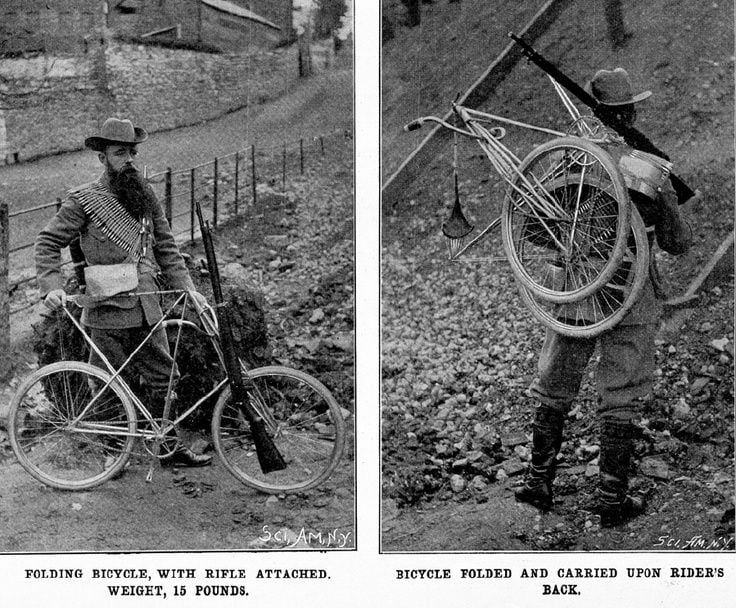Originally Posted by
T-Mar
That's the smallest frame size, which used a a 24" wheel. This picture was selected because it's believed to be the earliest surviving Pederesen, (serial no. 31, reportedly 1896, though that's a matter of some contention). Larger frame sizes came with 26" or 28" wheels. Modern Pedersens come with 700C as standard, though they will customize.
If you choose to believe claims in extant photos, there were even lighter version that were developed, such as the attached folding (military?) version at 15 lbs.

Here's what Pedersen himself had to say about his fork design,
"I build my front fork of four tubes, which I join at the top, where they carry a pivot spindle. About midway there is a crown plate, which carries the bearing for the pivot bolt, and keeps them apart, so that from there to the top the fork consists of four perfect triangles. On each side two tubes are joined at the lower end, thus forming a fork for the front wheel, each side consisting of a perfect triangle. Made in this way, the front fork is so strong that, although weighing only rather more than half a pound, it will carry a rider of sixteen stone (224 lbs) over a rough road."
The attached Pedersen quintuplet, is a testament tot the strength of truss fork design, though note that it uses six tubes, rather than four.

I wonder how much the bandolier weighed loaded with ammo.